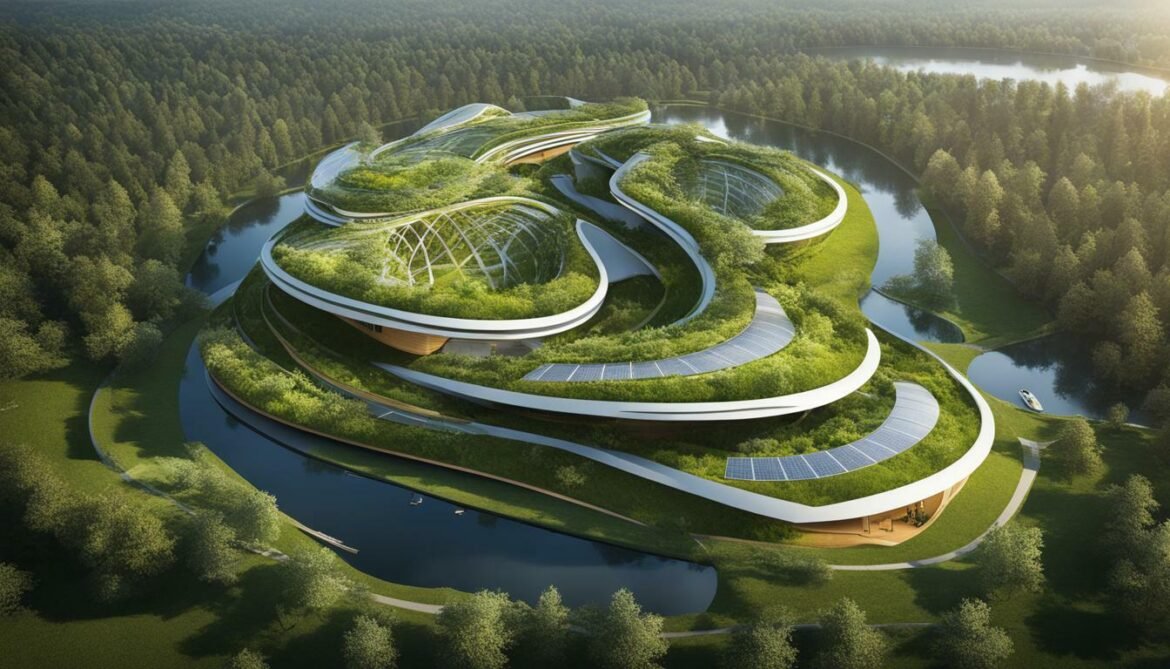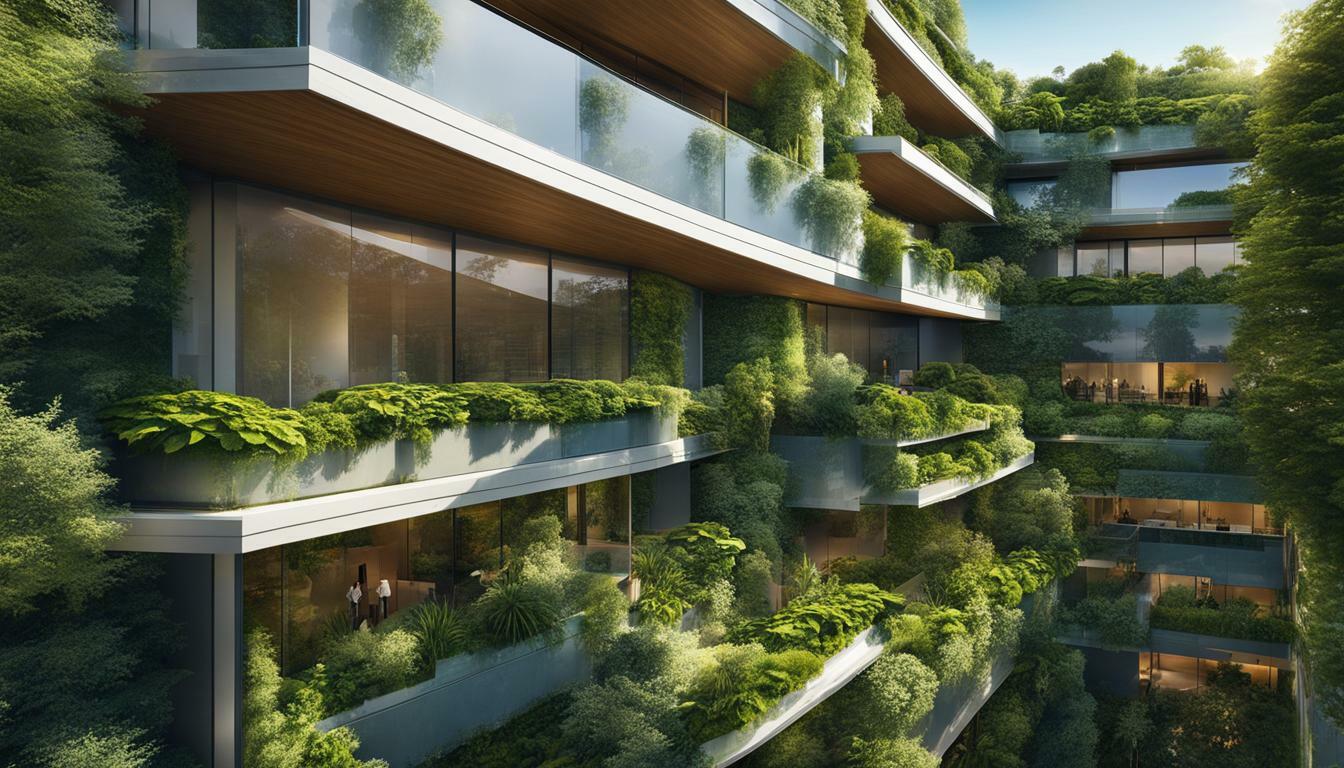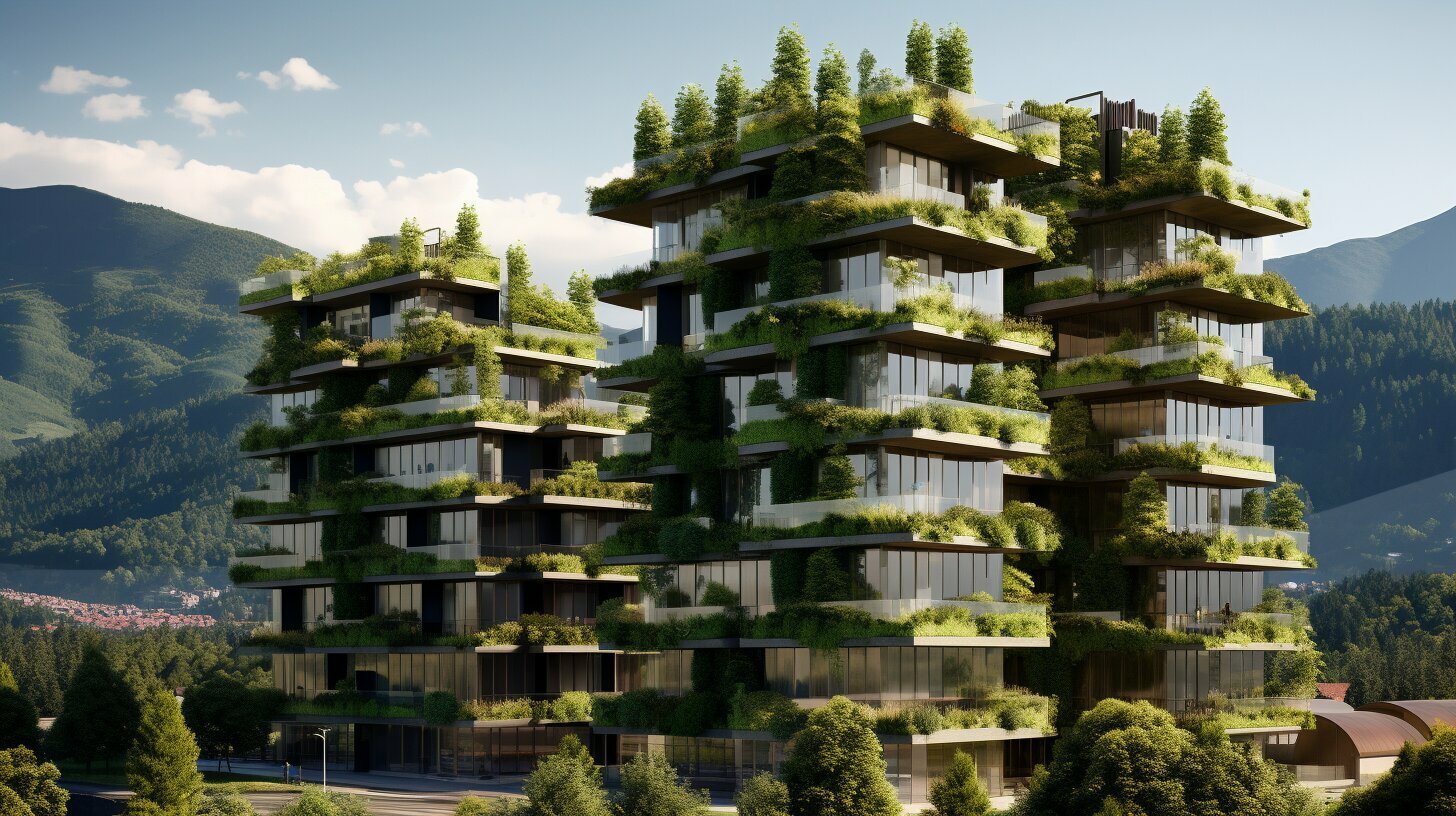Belarus Green Building: Pioneering Eco-Friendly Architecture
Belarus has emerged as a pioneer in eco-friendly architecture, with a focus on green building practices and sustainable development. The country has taken significant steps towards creating a sustainable built environment and promoting environmentally friendly design principles.
Key Takeaways
- Belarus is leading the way in eco-friendly architecture and sustainable development
- The Green Belt project in Minsk is transforming former industrial zones into sustainable and green neighborhoods
- Sustainable building design and construction in Belarus involves stringent energy efficiency standards and the integration of green technologies
- Belarus emphasizes the use of sustainable materials and construction practices
- The government of Belarus supports and promotes green building practices and sustainable development through guidelines, regulations, and incentives
The Green Belt Project in Minsk
One notable example of Belarus’s commitment to eco-friendly architecture is the Green Belt project in Minsk. This ambitious urban redevelopment initiative aims to transform the city’s former industrial zones into sustainable and green neighborhoods. The project will involve the construction of eco-friendly buildings, the implementation of renewable energy systems, and the integration of green spaces and urban agriculture.
The Green Belt project is part of Belarus’s wider efforts towards sustainable urban planning and green construction techniques. The project aims to create a model for sustainable, socially inclusive, and economically viable urban development. It prioritizes the use of environmentally friendly materials and construction practices, as well as the integration of green technologies such as advanced insulation and energy-efficient lighting systems.
The project also emphasizes the importance of sustainable transportation systems, with a focus on bike lanes and pedestrian-friendly streets. The Green Belt will create a network of green spaces, urban parks, and gardens, promoting a healthy and active lifestyle for residents.

The Green Belt project is a testament to Belarus’s commitment to sustainable development and eco-friendly architecture. It demonstrates that it is possible to create a built environment that is both environmentally friendly and visually appealing. By promoting sustainable urban planning and green construction techniques, the project is setting a model for other cities to follow.
Sustainable Building Design and Construction in Belarus
In addition to the Green Belt project, Belarus has also made strides in sustainable building design and construction. The country has implemented stringent energy efficiency standards for new buildings, and there is a growing emphasis on utilizing renewable energy sources such as solar and wind power. Many new buildings in Belarus incorporate green technologies, such as advanced insulation, energy-efficient lighting systems, and rainwater harvesting.
Belarus’s commitment to sustainable design and construction goes beyond just incorporating green technologies. The country also focuses on using environmentally friendly building materials, such as recycled and locally sourced materials, to reduce the environmental impact of construction.
One example of sustainable building design in Belarus is the Eco-Technopark in Mogilev. This research and development center focuses on sustainable technologies and renewable energy systems. The buildings within the park are designed to be energy-efficient and utilize green technologies, such as geothermal heating and cooling.
Another example is the Green City complex in Bobruisk. This residential complex incorporates green technologies and features, including solar panels, rainwater collection systems, and green roofs. The complex also includes a sustainable transportation system, with bike lanes and electric vehicle charging stations.
Belarus’s emphasis on sustainable building design and construction is not just limited to individual projects. The country has also implemented sustainable urban planning principles to create environmentally friendly cities and neighborhoods. The concept of eco-cities, which prioritize sustainability and quality of life, is gaining momentum in Belarus. These cities aim to create a harmonious balance between man-made infrastructure and the natural environment, integrating green spaces, pedestrian-friendly streets, and efficient transportation systems.

Overall, Belarus’s commitment to sustainable building design and construction is setting an example for other countries to follow. The country’s efforts towards utilizing renewable energy sources, incorporating green technologies, and promoting environmentally friendly building materials are improving the quality of life for its citizens and minimizing the environmental impact of construction. Belarus’s focus on sustainable urban planning also highlights the country’s dedication to creating a built environment that is both aesthetically pleasing and environmentally conscious.
Emphasis on Sustainable Materials and Construction Practices
Belarus has also been proactive in promoting sustainable materials and construction practices. The use of environmentally friendly building materials, such as recycled and locally sourced materials, is encouraged. Additionally, there is an emphasis on reducing construction waste through recycling and waste management initiatives.
The government of Belarus has set regulations and guidelines for eco-friendly architecture, including the use of sustainable materials. Developers and architects are encouraged to prioritize the use of locally sourced and recycled materials. This not only reduces the environmental impact of construction but also supports local economies and reduces transportation emissions.
Furthermore, Belarus has implemented waste management initiatives to reduce construction waste. Recycling programs and sustainable waste management practices are encouraged on construction sites, with the aim of minimizing the amount of waste that goes to landfills and reducing the carbon footprint of construction.
Belarus’s emphasis on sustainable materials and construction practices is a key element of the country’s overall commitment to eco-friendly architecture and sustainable development. By promoting the use of sustainable materials and reducing waste, Belarus is creating a built environment that is both environmentally conscious and economically sustainable.

Government Initiatives and Support for Green Building
The government of Belarus has played a crucial role in promoting eco-friendly architecture and sustainable development. The Ministry of Architecture and Construction has developed strict guidelines and regulations for green building practices, encouraging the use of sustainable materials and design principles. Additionally, they provide support and incentives for architects and developers to incorporate green technologies in their projects, such as solar panels and advanced insulation.
The ministry also conducts research and educates professionals about green building techniques and technologies. These efforts have led to an increase in the number of green buildings and sustainable developments in the country.
Belarus has embraced sustainable urban planning principles, ensuring that new developments include green spaces, energy-efficient transportation systems, and pedestrian-friendly streets. The country is also exploring the concept of eco-cities, which prioritize sustainability and quality of life, integrating green spaces and infrastructure.
Through these initiatives, Belarus is setting an example for other countries to follow, proving that it is possible to create a built environment that is both environmentally friendly and aesthetically pleasing. With the government’s continued support, the country will continue to make sustainable strides towards a greener future.

Conclusion
In conclusion, Belarus is at the forefront of eco-friendly architecture and sustainable development. The country’s commitment to sustainable design in Belarus, green construction practices, and sustainable materials sets it apart as a pioneer in the field.
The Green Belt project in Minsk and the Eco-Technopark in Mogilev are just a few examples of Belarus’s innovative green building initiatives. Belarus’s emphasis on environmentally friendly infrastructure and sustainable urban planning has resulted in the creation of sustainable and green neighborhoods that prioritize quality of life.
Belarus’s government has played a key role in promoting eco-friendly architecture and sustainable development by developing guidelines and regulations for green building practices and providing support and incentives for developers to incorporate sustainable design principles into their projects.
Through its commitment to sustainable building design and construction, Belarus is setting an example for other countries to follow. By prioritizing eco-friendly architecture and sustainable development, Belarus is creating a built environment that is both environmentally friendly and aesthetically pleasing, improving the quality of life for Belarusians and setting an example for other countries to follow.
FAQ
Q: What is the Green Belt project in Minsk?
A: The Green Belt project in Minsk is an urban redevelopment initiative aimed at transforming the city’s former industrial zones into sustainable and green neighborhoods.
Q: What are some examples of sustainable building design and construction in Belarus?
A: Examples of sustainable building design and construction in Belarus include the incorporation of advanced insulation, energy-efficient lighting systems, and rainwater harvesting in new buildings.
Q: How does Belarus promote sustainable materials and construction practices?
A: Belarus promotes sustainable materials and construction practices by encouraging the use of environmentally friendly building materials, such as recycled and locally sourced materials, and reducing construction waste through recycling and waste management initiatives.
Q: What role does the government of Belarus play in promoting eco-friendly architecture?
A: The government of Belarus plays a crucial role in promoting eco-friendly architecture by developing guidelines and regulations for green building practices, providing support and incentives for developers and architects, and conducting research and education about green building techniques and technologies.
Q: What are some notable sustainable developments in Belarus?
A: Notable sustainable developments in Belarus include the Green City complex in Bobruisk, which incorporates green technologies such as solar panels and rainwater collection systems, and the Eco-Technopark in Mogilev, which focuses on sustainable technologies and renewable energy systems.








